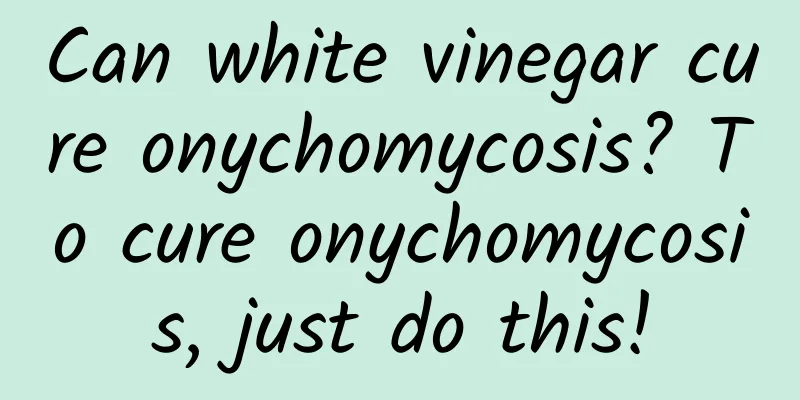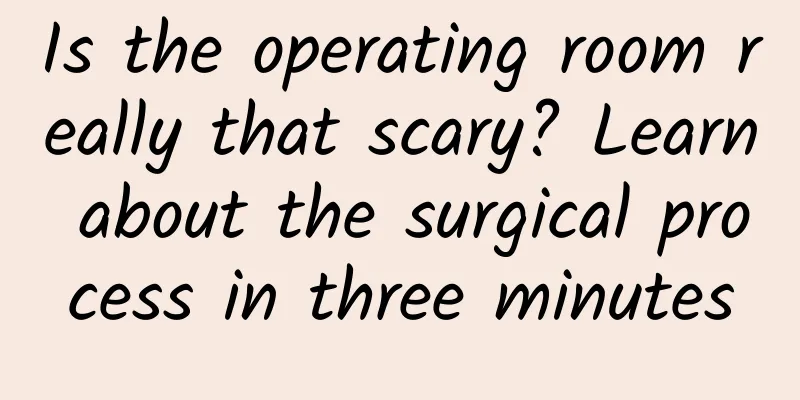Can white vinegar cure onychomycosis? To cure onychomycosis, just do this!

|
Author: Li Ruoyu, Chief Physician, Peking University First Hospital Honorary President of the Dermatologist Branch of the Chinese Medical Doctor Association Reviewer: Chen Yong, Chief Physician, Beijing Chaoyang Hospital, Capital Medical University In the traditional concept of the people, onychomycosis is a stubborn disease with no good cure, and taking medicine will damage the liver, so it is better not to treat it. In fact, this is a common misunderstanding. There are now medicines that can cure onychomycosis, and there are many treatment methods with very good treatment effects. If you insist on standardized treatment, about 70 to 80 percent of onychomycosis can be cured. 1. Can onychomycosis be cured by simply applying topical medications? For some patients with mild symptoms, the degree of involvement of the nail plate is very light, the proximal nail matrix (the white half-moon of the nail) is not affected, the affected area of the nail does not exceed half, and it is very superficial. For patients with no obvious hypertrophy of the nail plate, local medication, that is, external medication, can be the first choice for treatment. The advantage of local medication is that it is safe and people don’t have to have too many concerns. Many patients think that taking medication will damage the liver and kidneys, but if they don’t take medication, they don’t have to worry about these things. But in fact, topical medications also have their limitations, because it is difficult for drugs to penetrate the nail plate to achieve effective antibacterial effects, and long-term medication is required, so you must be patient, which is a big test for patients. Generally speaking, it takes at least 6 months, or even one or two years, to achieve complete cure. Figure 1 Original copyright image, no permission to reprint Topical drugs for treating onychomycosis are generally antifungal drugs, ranging from weakly acidic drugs to chemical antifungal drugs. According to the more traditional view, people believe that white vinegar can cure onychomycosis, and this idea is actually correct. Because acetic acid can indeed inhibit bacteria, but because the acetic acid concentration of white vinegar is too low, you cannot expect to cure it quickly using white vinegar. The simplest topical preparation in clinical practice is 30% glacial acetic acid, which can be directly applied to the surface of the nails to inhibit fungal growth. However, due to its limited penetration and antibacterial effect, it needs to be used continuously for a long time. There are also successful treatment examples, but it requires perseverance. Figure 2 Original copyright image, no permission to reprint There are also some new preparations developed in recent years. It is a film-forming agent that can form a film like nail polish on the nails. The drug remains on the nail for a period of time and is continuously released into the nail plate, with better penetration and durability. This type of drug is currently the most commonly used topical antifungal drug and can only be prescribed after a correct diagnosis by a doctor. 2. Which onychomycosis patients need medication? If the damaged area of the nail plate exceeds 50%, or there is damage around the nail plate, the nail plate is particularly thick, and topical medications are difficult to penetrate, it is recommended that patients treat onychomycosis with oral medications. However, some contraindications need to be excluded, such as drug allergy; severe liver and kidney diseases; patients with serious chronic diseases, such as cardiovascular and cerebrovascular diseases, and diabetes, need to take multiple medications. If oral medications are added, the burden on the liver will be increased, which are also factors that need to be considered. Of course, oral medication is the most reliable means of treating onychomycosis, and it can also be said to be the strongest killer. Because oral medication has a killing effect on fungi, or has a very strong inhibitory effect. Oral medication will reach the nail bed after oral medication, because the blood circulation of the nail bed is very rich, so it can penetrate and diffuse from the nail bed to the nail plate, and then achieve a bactericidal or antibacterial effect. This is the working principle of oral medication. Topical medications often penetrate the nail surface downwards and play a local therapeutic role after penetrating the nail. If you use topical medications and oral medications at the same time, the two can completely kill the bacteria in the onychomycosis through the effect of internal and external attack. There are several major categories of commonly used oral medications, such as the antifungal terbinafine, the broad-spectrum itraconazole, and fluconazole, all of which can have varying degrees of therapeutic effects on onychomycosis. Figure 3 Original copyright image, no permission to reprint Relatively speaking, the safety of these drugs is also good. In the process of widespread clinical application, their adverse reactions can basically be monitored if they are used in a standardized manner under the guidance of professional doctors. Patients are advised to choose medication under the guidance of a dermatologist after being diagnosed with onychomycosis. In addition, during the medication process, regular follow-up is required, one to monitor the efficacy and the other to monitor adverse reactions. From a safety perspective, antifungal drugs should be discontinued after a certain course of treatment and should not be taken endlessly. If you continue to take them until the nails grow back completely, the course of treatment may be very long, and the potential harm to the human body will be greater, so the course of treatment should be shortened as much as possible. At this time, external medications are needed to assist in treatment, consolidate the therapeutic effect, and prevent recurrence. 3. How long does it take to cure onychomycosis? Generally speaking, the treatment course for onychomycosis is 2-3 months for fingernails, 3-4 months for toenails, and even longer, up to 6 months. However, if it is completely cured, it is necessary to observe the efficacy in the later stage. In fact, it often takes half a year for hands and a year for feet. Some patients may ask, can the nail fungus be as smooth and shiny as before after being cured? In fact, this is the most ideal state. However, when the nail plate is damaged and then restored, some traces are often left, such as some pits and horizontal grooves on the surface of the nail plate. But in fact, the nail fungus has been cured, and it is just a scar left after the cure. If a pathogen test is performed, there will be no fungi observed under the microscope after scraping, and no live bacteria will grow in the fungal culture. Only by combining these two indicators can it be determined whether the onychomycosis has been completely cured. Therefore, to determine whether onychomycosis is cured, you need to go to a professional hospital for follow-up and let a professional doctor help you make the judgment. |
<<: Is bladder cancer related to smoking? Its typical symptoms are...
Recommend
What are the symptoms of blocked breast ducts?
If the milk ducts are blocked, it may lead to ins...
Analysis of the reasons for episiotomy or cesarean section
Many pregnant women who are about to give birth a...
Subvert your understanding of "iron supplementation"! The real "iron" is actually "sea ginseng"?
Top 10 common iron-supplementing foods, the first...
What fruits are suitable to eat during menstruation?
Menstruation is every girl's pain. Menstruati...
What causes urethral pain when women urinate?
In today's society, such problems have become...
Best time for pregnant women to supplement DHA
After pregnancy, there are three things that preg...
What if my period comes back ten days after my period?
I often hear girls discussing their irregular men...
Diagram of the location of the peritoneum
When a woman's pelvic reproductive organs and...
Pictures of tearing wound after normal delivery
Many mothers who give birth naturally have a peri...
Why do women fear cold?
People who are afraid of cold should take more su...
What to do if you vomit even when drinking water during pregnancy
If a pregnant woman vomits even when drinking wat...
5 factors that contribute to the worsening of chronic kidney disease! The more you have, the more dangerous it is
Chronic kidney disease (CKD) is a highly insidiou...
Why does breast leakage occur?
Galactorrhea is a phenomenon that may occur in fe...









